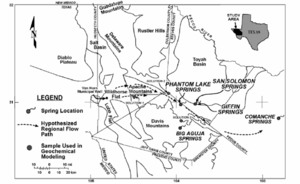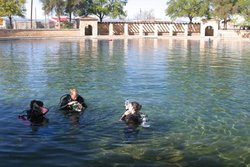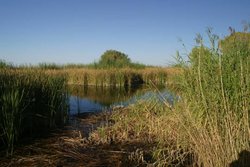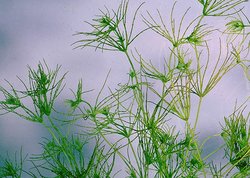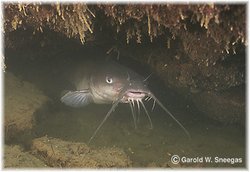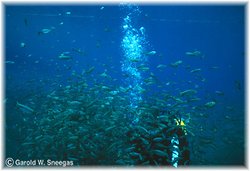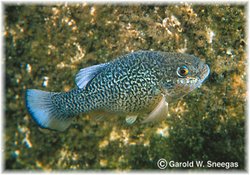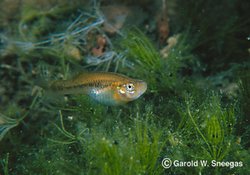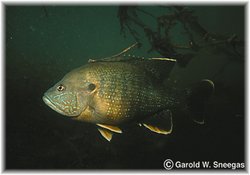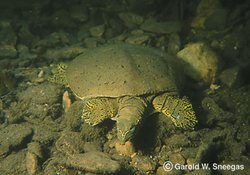San Solomon Springs, Balmorhea Texas
Contents
- 1 Introduction
- 2 History
- 3 Balmorhea State Park
Introduction
San Solomon Springs, also know as Mescalero or Head Springs in the past, are the largest springs (San Solomon Springs, Balmorhea Texas) in Reeves County, TX (elevation 1020 meters, 3,346 feet). San Solomon Springs is a slightly warm (26 degrees Celcius, 79 degrees Farenheit) artesian spring. The average rate of flow is about 900 liters (238 gallons) per second, with a maximum flow of about 2000 liters (528 gallons) per second recorded in October, 1932. The flow of San Solomon Springs has declined a little over the last decades, but not nearly as much as other springs in the region.
Recharge
The spring is fed by both local and regional recharge. Because local precipitation is low, local recharge only occurs after rainstorms. The local flow makes up almost three quarters of the flow volume following large storms. The quality of water entering the springs from the local flow is different with more suspended particles, fewer dissolved solids, and lower temperature.
The basis of the regional recharge system is water from the Davis Mountains. The regional flow that feeds the spring, the longest flow system in the Trans-Pecos region, originates in the Salt Basin and then flows through the Apache Mountains to the Toyah Basin. Interbasin flow is possible because the rocks in the Apache mountains are permeable (because they have have openings leached out of the limestone) and because there are a large number of fractures in the rocks that allow easy water movement. Water flows through Lower Cretaceous limestone. Water flows into the Toyah Basin where it runs into a layer of impermeable Upper Cretaceous rocks that have been faulted down. When the water, under pressure from the weight of the impermeable layer above reaches the impermeable layer, the water is pushed up the fault until it reaches the surface in the springs. The slightly warm temperature of water leaving the spring suggests that water has traveled up to 300meters (984 feet) beneath the surface.
Size of recharge zone
The large amount of flow through San Solomon Springs (the spring is one of the 10 largest in the state) is only possible because water is carried to the springs by regional flow through a large recharge area. How much recharge area is required to feed San Solomon Springs? The average precipitation in the Trans-Pecos region is about 31 centimeters (12 inches) per year. Assuming a mean flow of San Solomon Springs of 900 liters(238 gallons) per second, we can calculate the annual flow as = 28,382,400,000 liters (100,000,000 cubic feet)per year. Thus, all of the precipitation that falls on a 9.27 square kilometer (3.58 square mile) area would be needed to account for the annual flow. If we make the more realistic assumption that only 10% of precipitation reaches the groundwater then it would take all of the infiltrated water from a nearly 77 square kilometer (36 square mile) area to account for the annual flow of the springs. Thus, the actual recharge zone is probably much larger than this size.
Time water travels through aquifer
Water moving through this regional flow system may move up to 225 kilometers (140 miles) before entering San Solomon Springs. Water traveling from the Salt Basin to the springs may have traveled a distance of about72 kilometers (45 miles) through the Apache Mountains and onward to the springs. Assuming the relatively high rate of water movement of 200 meters (656 feet) per year (rates of water movement are high though limestone layers where caverns have been eroded), it would take over 380 years for water to travel from the Salt Basin to the springs and almost 1200 years to for water to travel the maximum distance to the springs from Ryan Flats. Obviously, if rates were slower, then water could take much longer to travel to the springs and its residence time in the aquifer would be correspondingly longer.
History
Historically, San Solomon Springs was an artesian spring that poured water into the desert creating a desert marsh, or cienega. San Solomon Springs was an important water source in the Trans Pecos Region of Texas and was used by native Americans (including the Mescalero Apache who watered their horses during the mid 19th century), early Mexican farmers (who built irrigation ditches to move water to their fields), and the U.S. Cavalry.
The town of Balmorhea was established near the [[spring]s] in 1904 (the town was named after the three land developers, Balcum, Moore, and Rhea, that first sent their agent to the region. In the 1930s, the Civilian Conservation Corps (CCC) built a swimming pool around the spring.
Balmorhea State Park
Balmorhea State Park was built by the CCC between 1936 and 1941. Today Balmorhea State Park is a popular location for camping, swimming, bird watching, and scuba diving.
Pool
Today the water flows from San Solomon Springs into a pool in Balmorhea State Park. At 7,156 square meters (77,035 square feet) in area and about 13 million liters (3.5 million gallons), it is one of the largest spring-fed pools in the world. The main circular region of the pool is 65 meters (214 feet )in diameter and two wings (21 by 73 meters, 70 by 240 feet). A shallow portion of the pool has a concrete bottom whereas the deeper portions of the pool have a natural bottom. Currently the maximum depth is 6.5 meters (21 feet), . Today the pool is a popular location for scuba divers because the shallow depth, warm water, and good visibility makes it an ideal location for teaching introductory scuba courses.
Cienega
The water flows from the pool through a series of channels into a restored wetland/cienega system in Balmorhea State Park built by the Texas Parks and Wildlife Department in 1979. From there the water runs through a series of ditches until it reaches Balmorhea Lake. The movement of water from the pool through the canals to the cienega is managed to ensure the survival of two endangered fish species.
Life in San Solomon Springs
Plants of San Solomon Springs
Because the water entering the San Solomon Springs has a low nutrient content, there is very little growth of phytoplankton in the pool. The lack of plankton is one reason that the water in the pool is so clear. Because the pool is relatively shallow (max depth < 7m, 22 feet), there is good light penetration to the bottom of the pool. Thus, most of the plants in San Solomon Springs are either benthic periphyton or benthic submerged macrophytes. Virtually every smooth substrate in the pool is covered by a layer of periphyton. This is true of the bottom of the swimming pool and the rocks at the bottom of the natural part of the pool.
Chara
The dominant macrophyte in the pool is an alga in the genus Chara (stoneworts, muskgrass, or skunkweed) from the Order Charales. The about 250 living species of algae in this order grow most commonly in fresh water. Because of its large size, Chara is often mistaken for a flowering plant, but Chara is a green algae that lacks true leaves or roots.
The fact that submerged aquatic vegetation (1) requires less structural material, (2) does not require a well-developed root system, (3) does not require well-developed xylem system, and (4) does not require the production of true leaves, allows macroalgae to be highly successful. Chara has a stem-like body with whorls of branching leaf-like structures (from 6 – 16 branches per node) occurring at nodes that can grow up to 1 meter (3 feet) in length. The long, narrow “leaves” of Chara have the high surface area to volume ratio necessary to pick up nutrients and carbon dioxide by diffusion. Chara is attached to the bottom by structures known as rhizoids, which serve no role in the uptake of nutrients or water. Chara is made up of giant cells that can be several inches long. The gray-green plants have a gritty feel because the surface is coated by calcium (probably to deter herbivores). They have a characteristic musky, garlic-like odor that arises from chemical produced by the plants to make them unpalatable to herbivores.
Reproduction in Chara involves the production of motile sperm in structures known as antheridia and eggs produced in structures known as oogonia. After sperm are released into the water column, they swim to the eggs that are still held on the plant where fertilization occurs.
Animals of San Solomon Springs
Mollusks

The most common snail in the pool and canal is the red-rimmed melania (Melanoides tuberculata). This species is native to tropical areas of Africa and Asia. They were originally imported to the United States for use in aquaria and were subsequently released to the wild when people dumped out the contents of their aquaria. The red-rimmed melania has an elongate conical shell, usually having 5 whorls. They usually reach 30 – 36millimeters (1.18 - 1.42 inches)in size. They are herbivorous, feeding mostly on microalgae. They are mostly active at night and spend the day hidden or buried. They may reproduce sexually or parthenogenetically (asexual reproduction). They are viviparous (the young are born alive) and brood their young in a brood pouch. The number of young produced depends on the size of the snail, ranging from 1 – 70 young.
Native snails found in San Solomon Springs, the Phantom Cave snail (Cochliopa texana) and the Phantom Springsnail (Tyronia cheatumi ), are endangered because they are only found in three spring systems (Phantom Lake, San Solomon, and East Sandi Springs). The Phantom Cave snail is a small snail (1 – 1.4millimeters, 0.04 - 0.045 incheslong) found living on firm substrates (rocks and vegetation). They produce live young, but rather than caring for a large brood at the same time, young are produced serially. They feed on detritus and periphyton, with diatoms making up much of their diet. The abundance of these snails may have been greatly reduced because of competition with the introduced red-rimmed mealania. The Pecos assiminea snail (Assiminea pecos) is an endangered semi-aquatic snail that is found at the nearby East Sandia Springs, but is not found in San Solomon Springs.
Arthropods
If you turn over a a few rocks on the bottom of the pool, then you will probably see some arthropods.
Crayfish
Crayfish are decapod crustaceans (lobsters, crayfish, shrimps, and crabs) and have 5 pairs of legs, the first of which is modified to form their well-developed pincers. Each of the body segments has appendages that have been modified to perform a variety of functions. Crayfish are omnivores that can feed on living animal and plant material or on detritus.
Amphipods
The amphipods found in the pool, Gammarus pecos, are omnivorous amphipods that are active at night feeding on algae and organic debris, including carrion.
Fishes
Channel catfish
Channel catfish (Ictalurus puntatus) are the largest fish found in the pool. These catfish have a cylindrical cross-section. Their dorsal and pectoral fins have sharp hard spines which can be painful if they are handled improperly. They lack scales with their bodies covered instead by a smooth skin. Channel catfish have 8 barbels that they use to locate food. Channel catfish are popular targets of sport fisherman. The world record is 31 kilograms (68 pounds) from South Carolina with a Texas record of about 36 pounds (16 kilograms). Fortunately or unfortunately, the catfish in the pool are much smaller than these giants!
Channel catfish are found in a variety of aquatic habitats ranging from rivers to ponds. They typically prefer sandy or gravel bottoms over muddy bottoms and they tend to avoid areas of dense aquatic weeds. Channel catfish have omnivorous feeding habits and have been observed to feed upon a variety of dead and living plant and animal material. Their extreme generalist diet has allowed them to survive in a variety of [[habitat]s. Most feeding occurs at night; the greatest activity occurs between sundown and midnight and again just before day, although they can be observed feeding during the day. They feed by using their barbells to locate food on the bottom, but they may also feed in the water column. Diets include fish, crayfish, insects, and plant material with fish being an important component of the diet of adults (up to 75% of the diet). The diet of juveniles consists of small insects and plankton. Channel catfish detect their prey using taste or sight. They have taste buds on their skin, inside their mouths, and in their gill arches. The highest concentration of taste buds occurs on the barbells. Taste is the most important sense for catfish feeding at night or in murky water.
Reproduction occurs during the spring and summer. Females lay from 400 – 35,000 eggs. Nests, which are tenaciously guarded by the males, are located in shallow water under some sort of over head cover. They reach sexual maturity in 3 – 6 years in natural populations (faster in captivity) when they are about 30 cemtimeters (12 inches) long.
Roundnose minnow
The roundnose minnow (Dionda episcopa) lives in shallow pools in rivers and streams with aquatic vegetation. They typically are observed moving slowly along the bottom. They are mostly herbivores and produce non adhesive demersal eggs. They reach a maximum size of 80milliemeters (3 inches).
Mexican tetra
The Mexican Tetra (Astyanax fasciatus) relatively recently (in geological terms) invaded the United States by swimming up the Rio Grande and Pecos Rivers. Although it is native in North America, it has been introduced more broadly across the region through its use as bait fish (released from bait buckets). Because it can be a voracious predator, there has been some concern that introduction of this species may disrupt native fish communities because of predation by the tetras on juveniles. They are found in a variety of habitats, but are most commonly found schooling in pools, especially those associated with [[spring]s]. Mexican Tetras are omnivores who feed on invertebrates, fish, and algae. They are quite active open-water fish that often swim in schools. They reach a maximum size of about 100millimeters (4 inches) and have a black mark in front of their tail fin.
Comanche Springs pupfish
The Comanche Springs Pupfish (Cyprinodon elegans) are omnivores who can consume detritus, diatoms, algae, insects, crustaceans, and snails. They often feed by ingesting substrate, chewing it, and then expelling the left-overs through their mouth or gills.
Male pupfish defends a territory of approximately 0.15 square meters (1.6 square feet), typically containing an algal mat; these territories are used both for feeding, spawning, and a site for egg laying. Mating occurs over these territories and eggs, which are defended aggressively by the male, and laid in the territory. Males court the females and eggs are laid singly on algal mat in the males territory. Comanche Springs pupfish are short-lived with most individuals living for about a year.
Comanche Springs pupfish grow to a maximum size of about 50 millimeters (2 inches). They are sexually dimorphic in terms of coloration; males have a dark bar at the tip of their tail fin. There are also distinct differences in coloration; dominant males have a bluish metallic color whereas males with low dominance tend to look like females. Females have a mottled color pattern with a dark spot at the rear of the top fin.
Pecos gambusia
The Pecos gambusia (Gambusia nobilis) is abundant in [[spring]s] and spring-fed creeks. They are typically found in clear stenothermal water (because they are tropical in origin they can’t handle the temperature changes well). They are capable of tolerating extreme salinities. The population living in the Diamond Y Spring drainage lives in water with half the salt concentration of seawater. Pecos gambusia are carnivorous surface feeders. In addition, they consume large numbers of amphipods. They will also feed on filamentous algae. Males reach a maximum size of 25 mm (1 inch) and females grow to about twice that size. They are viviparous and may produce around 40 offspring per brood. There is no parental care of the eggs after they are laid.
Largespring gambusia
The Largespring Gambusia (Gambusia geiseri) was introduced from San Marcos Springs to a number of areas for mosquito control during the 1930s and has established successful populations. They are similar in size to the Pecos gambusia and they are difficult to tell apart.
The Pecos and largespring gambusia are able to coexist, although which species is numerically dominant depends on abiotic conditions. In the low-salinity waters flowing out of the San Solomon Springs in Balmorhea, the largespring gambusia are most abundance (about 90% of the population) whereas in the more saline Leon Creek, the Pecos gambusia is more abundant. Thus, it appears that the characteristics that allow the Pecos gambusia to tolerate saline conditions reduces their competitive ability.
Green sunfish
The Green Sunfish (Lepomis cyanellus) is native to North America, east of the continental divide and west of the Appalachian Mountains, south of the Great Lakes and north of the Gulf and parts of northern Mexico. The are relatively large fish, with adults reaching a maximum size of 8 - 13 centimeters (3 – 5 inches). They are generally carnivorous and feed on a wide variety of food types including insects, crayfish, fish eggs, juvenile fish, small adult fish, mollusks, and frogs. Like many fishes, the diet of green sunfish change as they grow (they have an “ontogenetic niche shift”); larvae and juveniles feed mostly on zooplankton and then they switch to the adult diet as their size increases. They lay their eggs in nests (dimater 20 – 40 centimeters, 8 - 16 inches) in breeding territories that are defended by the males. Females lay 2000 – 10000 eggs per clutch that hatch in between 3 – 7 days. The males care for the eggs.
Reptiles
Texas spiny softshell turtle
The most common turtle found in the pool at Balmorhea is the Tex as Spiny Softshell Turtle, Apalone spinifera emoryi. This subspecies of the wide-States to the continental divide) is found in West Texas, Mexico, New Mexico, Arizona, and Utah. This species has a flat rounded shell and a long tapered nose which has nostrils with a lateral ridge. Their feet have claws and are webbed for swimming. Females are typically larger than males (females 16.5 – 56 centimeters, 6.5 - 22 inches; males 12.7 – 24 centimeters, 5 - 9.5 inches) and males typically have longer and thicker tails than the females. There is also some slight sexual dimorphism in body color. They feed on invertebrates such as insects and crayfish as well as fish. They may forage actively, searching for prey under objects and in vegetation, or they may rely on stealth, hiding in vegetation until an unsuspecting prey passes within reach.
Spiny softshell turtles reach sexual maturity in 8 – 10 years and have been observed to live over 25 years in captivity (estimates of maximum longevity for females exceeds 50 years). Mating occurs in the water in the spring and eggs (between 9 – 38 eggs about 29 millimeters, 1,1incnesin diammeter) are laid in shallow cavities that the female digs in sand or gravel near the water. The sex of this species is not determined by the temperature of eggs during incubation. Hatchlings emerge in the late summer or fall.
Like all other species of aquatic turtles, spiny softshell turtles must come to the surface to breathe. In some locations, these turtles are able to hide in shallow water and extend their long neck and pointy nostrils above the surface of the water like a snorkel. The shape of the pool at Balmorheae does not allow the turtles to employ this strategy so they must swim to the surface in order to breathe. However, these turtles are also able to take up oxygen while they are underwater through their skin and through highly vascularized tissues in their cloaca. The skin of softshelled turtles are three-four times more permeable than the skin of hard shelled turtles. Thus, when they are inactive, softshelled turtles may remain underwater for up to five hours because they can augment the air they breathe with oxygen picked up by diffusion. When they are actively hunting, they are forced to come to the surface much more often (usually about once every 20 minutes).
Although spiny softshell turtles and sea turtles are both well adapted to swimming through the water, they accomplish this in very different ways. The legs of sea turtles have evolved in to flippers. When they swim sea turtles use their front legs to propel them through the water while the hind legs fall behind them to act as a rudder. Typically, sea turtles move both front legs at the same time (in a breast-stroke-like movement).Soft shelled turtles use a very different motion that is clearly evolved from the walking gait of their terrestrial ancestors.Both the front and hind feet of softshelled turtles are extensively webbed so the turtles can generate forward motion with both the front and hind legs. Softshelled turtles swim by simultaneously moving their front left and rear right legs followed by simultaneous movement of the front right and left rear legs (this is the same pattern that you would see in walking quadrupeds).
Further Reading
- DesertUSA.com. Balmorhea State Park, Texas.
- Patoski, Joe Nick, 2005. The Park That Time Forgot Texas Parks and Wildlife Magazine.
- Texas Parks and Wildlife Department. Balmorhea State Park.
- The Handbook of Texas Online. San Solomon Springs.
- Uliana, M.M. and J.M Sharp, Jr., 2001. Tracing regional flow paths to major springs in Trans-Pecos Texas using geochemical data and geochemical models. Chemical Geology 179:53-72.
